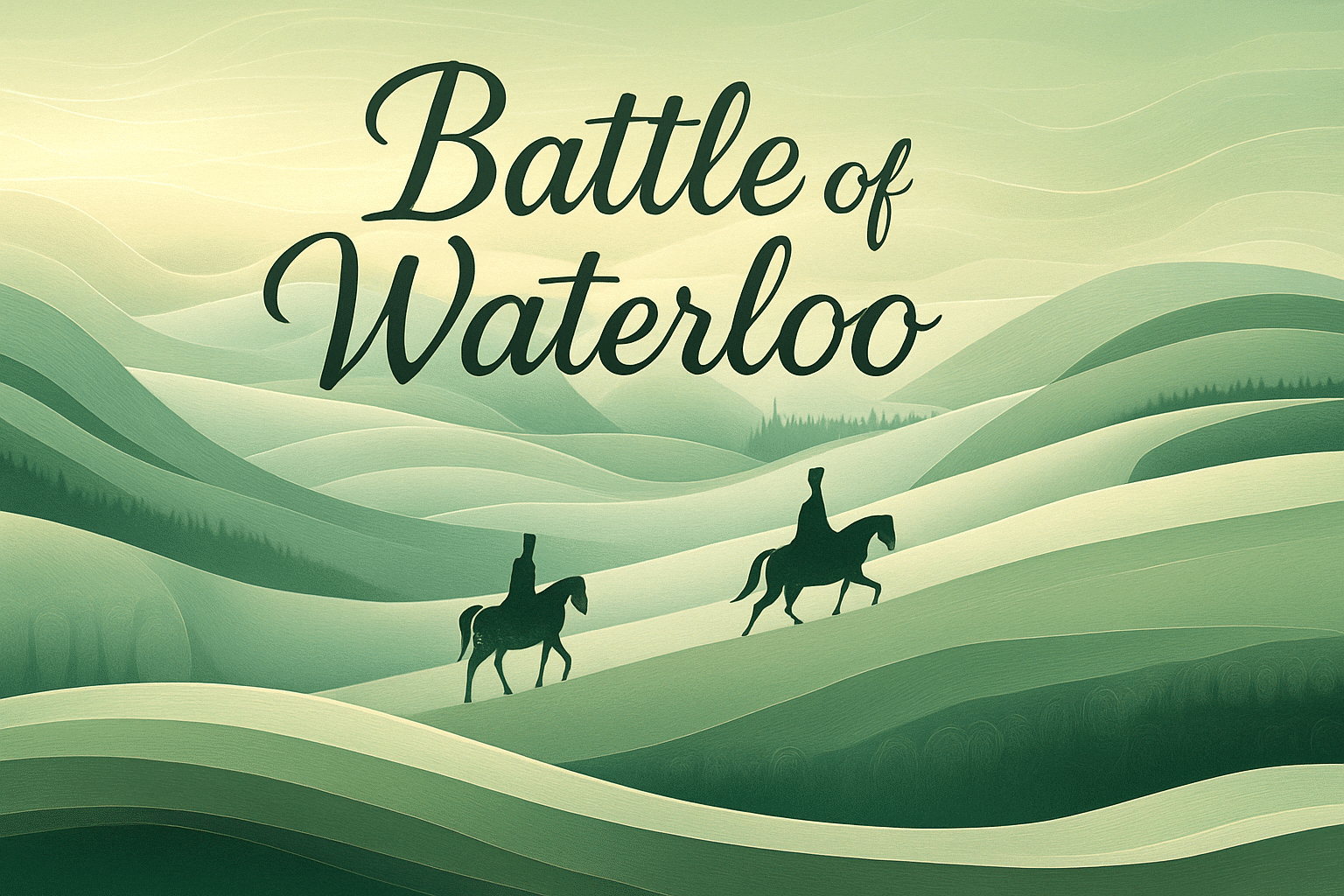What is the Battle of Waterloo Reenactment?
The Battle of Waterloo Reenactment is a large-scale historical event held every year in Belgium to commemorate the famous battle of 1815. It takes place on or around June 18 near the original battlefield in Waterloo, just south of Brussels. The event brings together thousands of reenactors, cavalry, artillery, and spectators for a vivid and dramatic retelling of one of Europe’s most decisive battles.
This reenactment recreates the moment when Napoleon Bonaparte faced the allied armies of Britain, the Netherlands, Prussia, and others under the command of the Duke of Wellington and General von Blücher. The battle marked the end of the Napoleonic Wars and reshaped European history.
Visitors witness realistic battle scenes, military camps, uniforms, and drills that offer a glimpse into early 19th-century warfare. It’s not just a show ; it’s a living history experience that mixes education, spectacle, and respect for the past.
History and Origin
The original Battle of Waterloo was fought on June 18, 1815. It was Napoleon’s final defeat, bringing an end to his rule and changing the course of European politics. The battle involved more than 100,000 troops and was one of the bloodiest of its time.
Reenactments began informally in the 20th century, but the tradition became more organized over time. Since the 1980s, groups of historical reenactors from across Europe have gathered to relive the battle with growing accuracy and scale. The largest editions took place on major anniversaries, such as the bicentenary in 2015, but reenactments are now held annually.
The event has grown into a multi-day experience, including guided tours, educational exhibits, period music, and open-air markets. Each year, thousands of visitors attend, making it one of the most important Napoleonic reenactments in the world.
Who participates in the Battle of Waterloo Reenactment?
- Historical reenactors: Volunteers from all over Europe portray soldiers, officers, and camp followers in full 19th-century attire
- Military history enthusiasts: People interested in tactics, uniforms, and weaponry often take part or attend the event
- Local communities: Residents of the region support the event through hospitality, organization, and local storytelling
- Tourists: Visitors from around the world travel to Belgium to watch the reenactment and learn about European history
- Historians and educators: Experts use the event to teach about the Napoleonic Wars through talks, tours, and demonstrations
Slogans and Themes
Themes often include honor, remembrance, and historical reflection. The event is not about glorifying war but about understanding its cost and legacy. Common slogans are “Relive History,” “The Day That Changed Europe,” and “Remember Waterloo.” The focus is on accuracy, atmosphere, and education. It blends drama with discipline and offers powerful scenes of cavalry charges, musket fire, and battlefield tactics.
Colors, Symbols and Patterns
Colors
- Blue: Associated with the French army and the uniforms of Napoleon’s troops
- Red: Worn by the British and used in banners, tents, and flags
- White: Linked with ceremonial elements and used for contrast in historical uniforms
Symbols
- Eagle standard: Carried by Napoleon’s troops, the eagle symbolizes imperial power
- Sabers and muskets: Essential to the weaponry of the period and central in reenactments
- Battle drums: Used for marching rhythm and military signals, they add sound and realism
Patterns
- Regimental stripes: Seen on flags, uniforms, and ceremonial sashes
- Crossed weapons: A common motif in insignias and reenactment branding
- Medals and badges: Replica military honors are worn to reflect historical ranks and valor
Most used hashtags
- #waterlooreenactment
- #battleofwaterloo
- #napoleonicwars
- #livinghistory
- #reenactmentlife
How do you celebrate the Battle of Waterloo Reenactment?
- Attend the reenactment: Watch massive battle scenes with cavalry charges, cannon fire, and infantry maneuvers
- Explore the camps: Walk through reconstructed military camps, meet reenactors, and see how soldiers lived
- Join a guided tour: Learn about the real battle with expert guides who explain the tactics, geography, and outcomes
- Visit the museum and memorial: Explore the visitor center, Lion’s Mound, and interactive exhibits about the battle
- Dress in period style: Some visitors come in 19th-century clothing to feel part of the scene and enhance the experience
Why is the Battle of Waterloo Reenactment important?
This reenactment is important because it brings history to life. It offers a unique way to understand a moment that changed the face of Europe. Instead of reading about it in a book, people can see, hear, and feel the scale of the battle and the human stories behind it.
The event also honors those who fought and died, showing the hardships and discipline of soldiers from all sides. It connects generations and reminds us how fragile peace can be. By stepping into the past, participants and visitors gain insight into the roots of modern Europe.
Features
Contact Info
Saturday closest to 18 June: The Battle of Waterloo Reenactment (Belgium)
Why do you keep falling for the same type?
Read the article Lovemaps: the hidden blueprint of our love.

